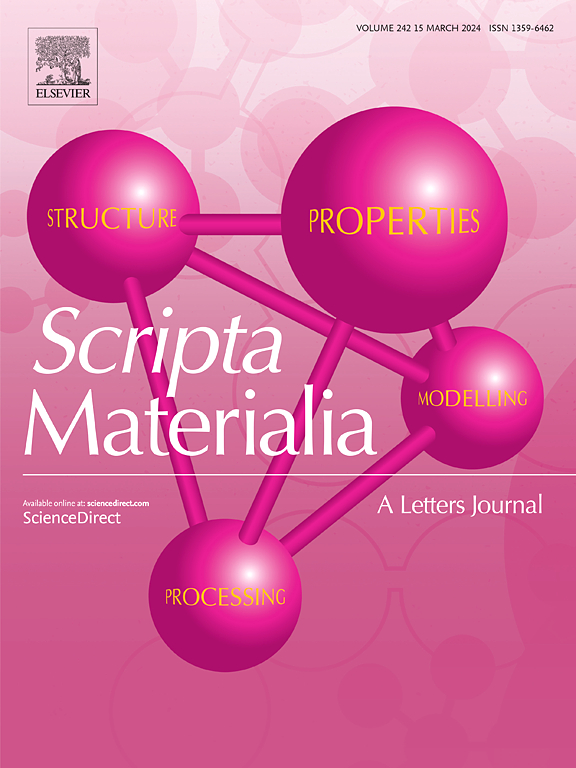激光粉末床与箔相结合3D打印316L-CuCrZr多材料结构体心立方相形成机理及显微组织特征
IF 5.3
2区 材料科学
Q2 MATERIALS SCIENCE, MULTIDISCIPLINARY
引用次数: 0
摘要
316L/CuCrZr多材料金属结构的增材制造最近引起了人们的极大关注,因为它具有结构和热电性能的理想组合。采用混合激光-粉末床熔合(L-PBF)工艺,将316L钢薄箔与CuCrZr粉末相结合,形成了一种独特的多相显微结构。原位XRD、EDS和EBSD测量显示,形成了两种不同的富Cu和富fe的FCC相,并与富fe的BCC相共存。根据观察到的相形态和热力学计算,提出了BCC相的形成机制是由相图的混相间隙、元素扩散和熔池内的流体动力学引起的。在增材制造中,BCC相含量的控制对于设计复杂的FCC+BCC“复合”微结构至关重要,这种微结构可以给L-PBF多材料316L/Cu结构带来实质性的强化。本文章由计算机程序翻译,如有差异,请以英文原文为准。

Formation mechanism and microstructural characteristics of a body-centered cubic phase in 3D printed 316L–CuCrZr multi-material structures, combining laser powder bed fusion with foils
Additive manufacturing of 316L/CuCrZr multi-material metallic structures has recently attracted significant attention, due to the ideal combination of structural and thermal/electrical properties. In this work, a unique multi-phase microstructure was produced with a hybrid laser-powder bed fusion (L-PBF) process combining 316L steel thin foils and CuCrZr powders. In-situ XRD, together with EDS and EBSD measurements, revealed the formation of two distinct Cu- and Fe-rich FCC phases that co-exist with an Fe-rich BCC phase. From the observed phase morphologies and using thermodynamic calculations, the formation mechanism of the BCC phase is proposed to result from the miscibility gap of the phase diagram, elemental diffusion, and fluid dynamics within the melt pool. The control of the BCC phase content in additive manufacturing is anticipated to be critical for designing complex FCC+BCC “composite” microstructures that can impart substantial strengthening to L-PBF multi-material 316L/Cu structures.
求助全文
通过发布文献求助,成功后即可免费获取论文全文。
去求助
来源期刊

Scripta Materialia
工程技术-材料科学:综合
CiteScore
11.40
自引率
5.00%
发文量
581
审稿时长
34 days
期刊介绍:
Scripta Materialia is a LETTERS journal of Acta Materialia, providing a forum for the rapid publication of short communications on the relationship between the structure and the properties of inorganic materials. The emphasis is on originality rather than incremental research. Short reports on the development of materials with novel or substantially improved properties are also welcomed. Emphasis is on either the functional or mechanical behavior of metals, ceramics and semiconductors at all length scales.
 求助内容:
求助内容: 应助结果提醒方式:
应助结果提醒方式:


